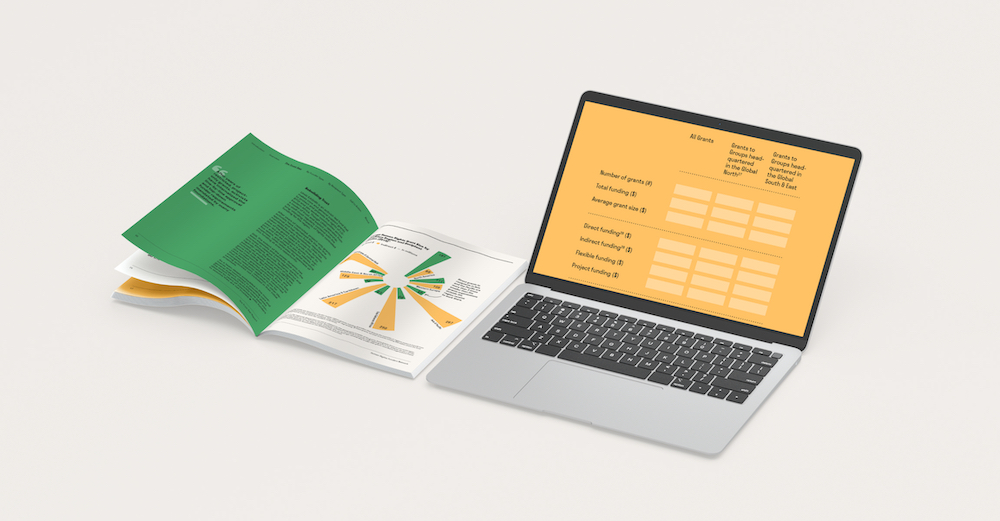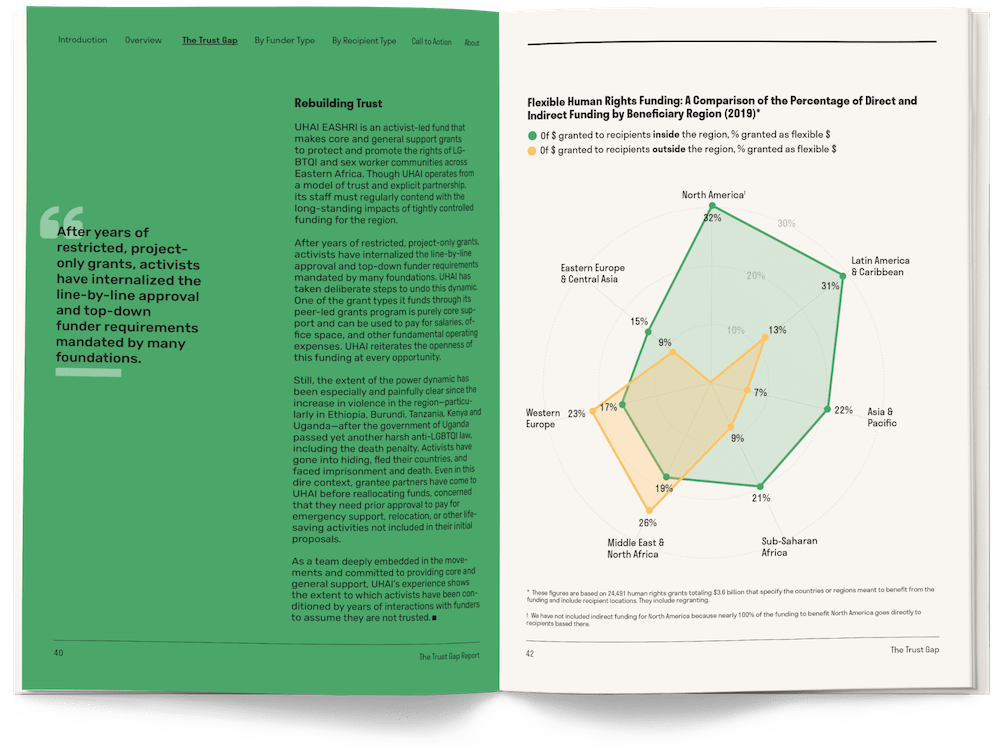Unprecedented research
For more than a decade, Human Rights Funders Network (HRFN) and our partners have mapped the landscape of global funding for human rights. Year after year, we have documented marked regional differences in the funding that human rights activists and institutions can access. In this report, we dive deeper into the data to explore what we call the “trust gap”–significant disparities in funding directed to groups in the Global South and East as compared to groups in the Global North.
In this report, we ask questions that echo concerns raised by funders and movements alike: Do these differences signify a gap in trust underlying global funding for human rights? While a trust gap in philanthropy can manifest in a variety of ways, here we focus on what we can measure through the grant data we collect. This includes which organizations receive grants to lead change in their own contexts and how much flexibility they have in determining how to use the funding.

Where the funding goes
Our research finds that 99% of human rights funding from foundations is granted by funders in the Global North, and 88% of that funding stays in the Global North. Very limited funding is reaching communities leading change in the Global South and East. This scarcity of funding also affects the philanthropic infrastructure in the Global South and East as many local and regional foundations struggle to secure the resources they need to fully support and sustain local activists and movements. The substantial and persistent regional disparities in who has access to and control over funding have serious repercussions for human rights movements globally, which require resources to sustain and expand their work.


Pervasive Disparities
Our research indicates that the trust gap is evident across a range of funding decisions and practices, from where organizations are based that are funded to lead human rights work, to the size of the grants they receive, to the extent they have the flexibility to decide how to use the funding.
A bare minimum standard should be that two-thirds of human rights funding is granted to those in the region – if not the country – that is meant to benefit from the grants and that a preponderance of the funding is flexible. That is simply not happening.
Share this post
What You Can Do
We invite you to move from reflection to action. You can do a lot within and beyond your institution—individually, collectively, and systemically—to more deeply and effectively support movements for justice around the world. As a starting point, use our self-assessment tool to take stock of your grants and identify biases.

Virtual Briefing
In October 2023, HRFN held a virtual briefing for the Trust Gap report. You can watch the recording of the briefing in English, Spanish and French below.
advisors
We are grateful to the funders and civil society advisors who have volunteered their time and expertise to help shape our Trust Gap research. Get to know them.

